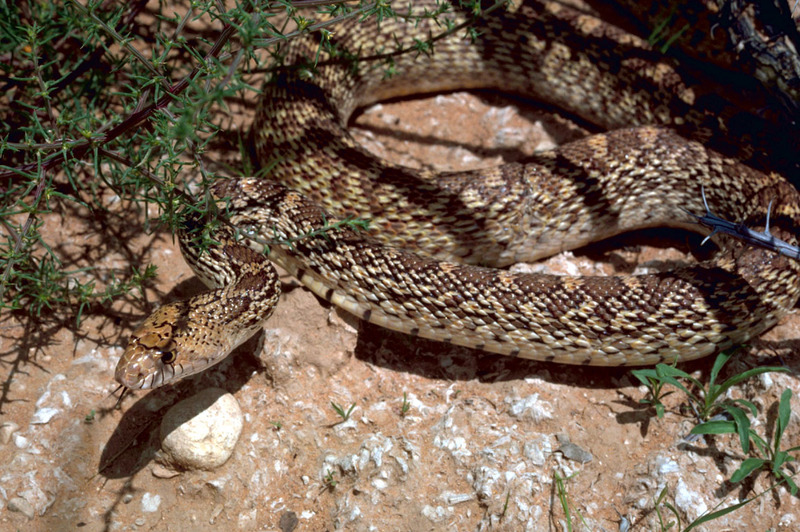|
Bullsnake (Pituophis catenifer sayi) (황소뱀)
| 제목: | Bullsnake (Pituophis catenifer sayi) (황소뱀)
| | 올린이: | Phoby (phoby@notmyphoto.com)
| |

| 해상도: 1158x770
파일크기: 290793 Bytes
등록시간: 2005:08:25 13:39:04
|
From the U.S. Fish and Wildlife Service's online digital media library.
Check http://images.fws.gov/ for higher quality version, and http://www.fws.gov/help/policies.html for copyright information.
Metadata
Title: Bullsnake
Alternative Title: pituophis melanoleucus sayi
Creator: Stolz, Gary M.
Source: WO8216
Publisher: U.S. Fish and Wildlife Service
Contributor: DIVISION OF PUBLIC AFFAIRS
Language: EN - ENGLISH
Rights: (public domain)
Audience: (general)
Subject: New Mexico, Desert, Reptile, Snakes, Animals, Reptiles, Wildlife, non-poisonous snake
Date Issued: October 29 2001
|
댓글 |
|---|
| | 손님 |
|
| Pituophis melanoleucus, commonly known as the pine snake, is a nonvenomous species of colubrid endemic to the southeastern United States.Order: Squamata, Suborder: Serpentes, Family: Colubridae, Subfamily: Colubrinae. |
^o^
동물그림창고 똑똑전화 누리집
^o^
|
|
|